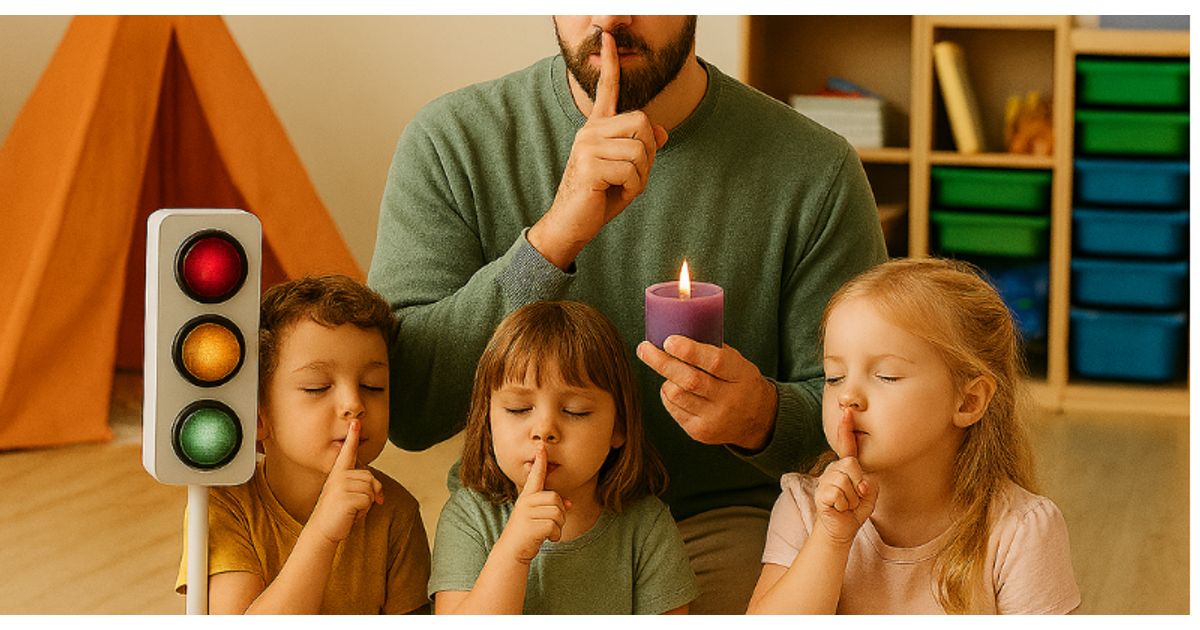When the door to the movement area closes, ten little hearts are still beating noticeably fast. Educator Jonas sets the noise traffic light to red, lights a lavender lamp, and whispers: "We blow out the candles... one, two, three." After three breaths, things quiet down, and the light switches to yellow. These mini-breaks don’t just help the children – they also protect the team from chronic stress.
Where Stress Begins
Measurements show: around 11 a.m., cortisol levels peak for many nursery-aged children [5]8. Main triggers include noise, unclear routines, and rapid group transitions. Chronic stress can reduce a child’s joy of learning and ability to form attachments [4]2.
Five Simple Everyday Relaxation Anchors
30-Second Heart Breathing – Place a hand on the heart and slowly "blow out candles." Studies show: immediately calming [3]9.
Movement Flip-Flop – Energetic play is always followed by a quiet activity (e.g., picture book, whispering song). This balances the nervous system [8]10.
Yoga Animal Path – Cat, dog, and cobra represented by stuffed animals encourage even two-year-olds to stretch intuitively [3]9.
Noise Traffic Light – An LED lamp displays sound levels. Children take on the “traffic light role.” This measurably reduces conflicts and decibel peaks [3]9.
Scent Anchor – The same lavender stone in the quiet area links scent with relaxation – classic conditioning.
When It Becomes Too Much
If a child consistently needs physical support, poses a danger to themselves or others, or experiences ongoing panic attacks, one-on-one care may be necessary. The path includes: careful documentation, a calm conversation with parents, an application for HPF or IV assistance, a transition plan with clear one-on-one phases, and a safe space [4]2.
Self-Care for Professionals
Supervision acts like a safety valve. It reduces the risk of burnout by up to 25% [5]8. A quarterly team check – sick leave, noise levels, supervision hours – makes strain visible and enables targeted action.
Parents as Stress Partners
If the same lullaby plays at home as in the nursery, a soothing rhythm is created. Questions like “Are you feeling disappointed?” help name emotions and build frustration tolerance [3]9. A “bravery jar,” where a stone is added for each challenge overcome, fosters self-efficacy.
Key Takeaway
Stress-free development is no coincidence. A well-balanced mix of activity and rest, consistent rituals, and loving guidance help children, parents, and professionals grow together.
